Solar Impulse attempts to cross weather front
- Published
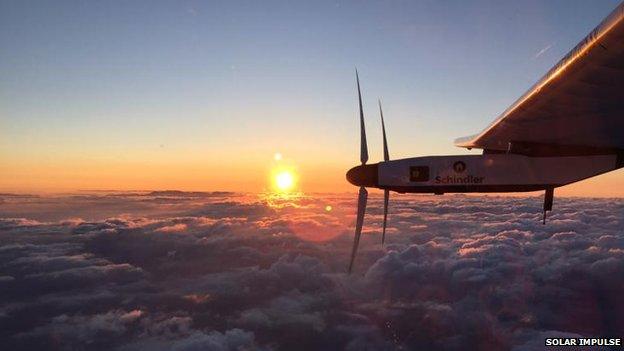
The plane will have to cross two weather fronts during its journey to Hawaii
A solar-powered plane that is attempting to cross the Pacific Ocean is encountering its first weather front.
It will have to navigate a route through the wall of clouds and rain to continue its epic journey to Hawaii.
Solar Impulse took off from Japan's Nagoya Airfield at 18:03 GMT on Sunday, and is expected to spend about 120 hours in the air.
It will have to cross another front on the fourth or fifth day of the flight.
The plane has now entered US airspace, and has set the record for the longest flight made by a solar plane.
If the pilot, Solar Impulse co-founder Andre Borschberg, completes the journey, he will also have achieved the longest-duration solo flight in aviation history.
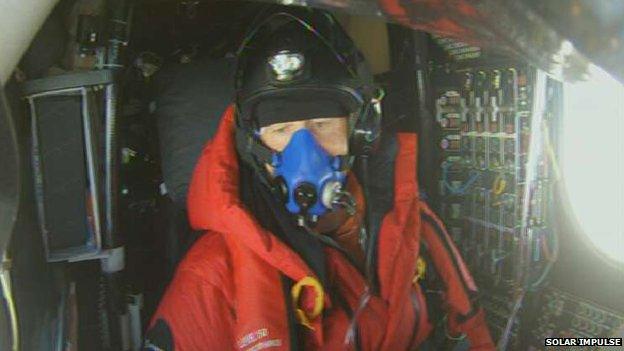
Andre Borschberg is only allowed to have 20 minute naps during the flight
A spokesperson for Solar Impulse said the team had come up with a strategy for crossing the weather front.
While it is night-time for the pilot, he has been asked to keep the plane in a holding pattern at an altitude of about 7,000ft.
But at about 20:00 GMT, as the Sun rises, he will start to gently ascend.
While he is waiting in the same position, circling above the ocean, the weather front should start to weaken.
The team's meteorologists have forecasted that the clouds will become more disparate, which, as day breaks, should give Mr Borschberg a safe route through.
After this, the plane should have two days of clear weather, before hitting another weather front just before it nears Hawaii.
The meteorologists are closely watching to see whether the second front gets more or less active. When they have more accurate information, they will begin to plan the final stages of the flight.
They are under a great deal of pressure. If something goes wrong with the flight, Mr Borschberg may have to bail out into the Pacific Ocean and await rescue.
If the flight succeeds, the team will continue with the final stages of their epic journey around the world.
The plane will head to America, then cross the continent, before flying across the Atlantic and returning to Abu Dhabi from where the global circumnavigation began.



LEG 1: 9 March. Abu Dhabi (UAE) to Muscat (Oman) - 772km; in 13 hours and 1 minute
LEG 2: 10 March. Muscat (Oman) to Ahmedabad (India) - 1,593km; in 15 hours and 20 minutes
LEG 3: 18 March. Ahmedabad (India) to Varanasi (India) - 1,170km; in 13 hours and 15 minutes
LEG 4: 18 March. Varanasi (India) to Mandalay (Myanmar) - 1,536km; in 13 hours and 29 minutes
LEG 5: 29 March. Mandalay (Myanmar) to Chongqing (China) - 1,450km; in 20 hours and 29 minutes
LEG 6: 21 April. Chongqing (China) to Nanjing (China) - 1,241km; in 17 hours and 22 minutes
LEG 7: 30 May. Nanjing (China) to Nagoya (Japan) - 2,852km; in 44 hours and 9 minutes
Leg 8: 28 June. Nagoya (Japan) to Kalaeloa, Hawaii (USA) - 8,000km; 120 hours (estimated)

Follow Rebecca on Twitter, external.
- Published29 June 2015

- Published3 June 2015

- Published1 June 2015
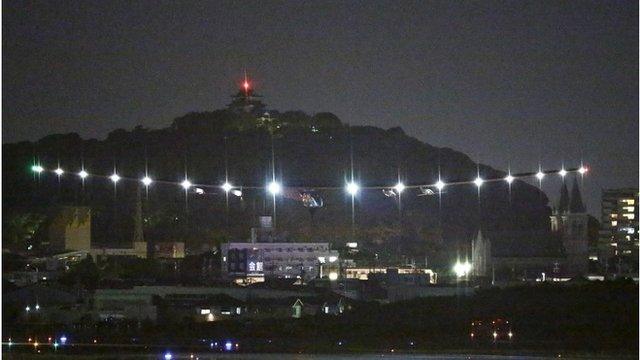
- Published30 May 2015

- Published1 June 2015
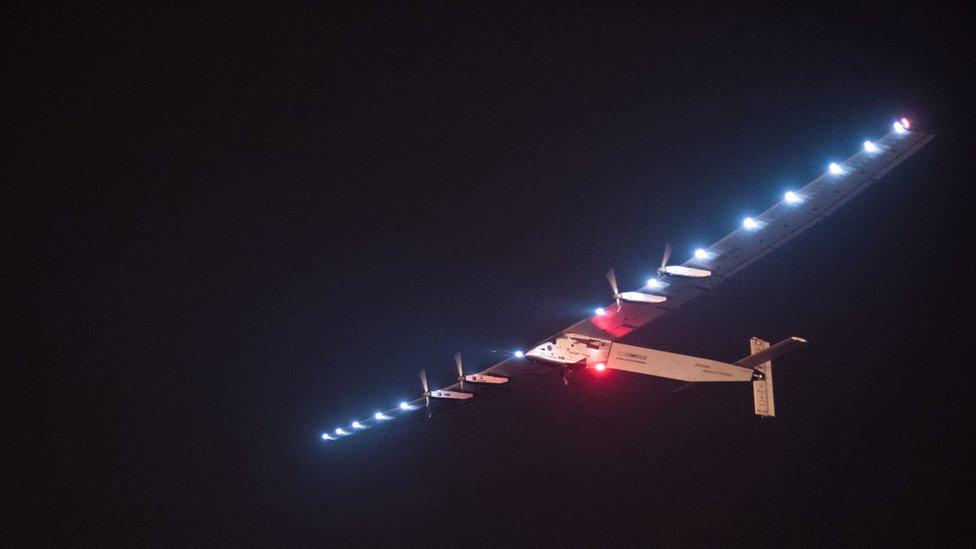
- Published13 May 2015
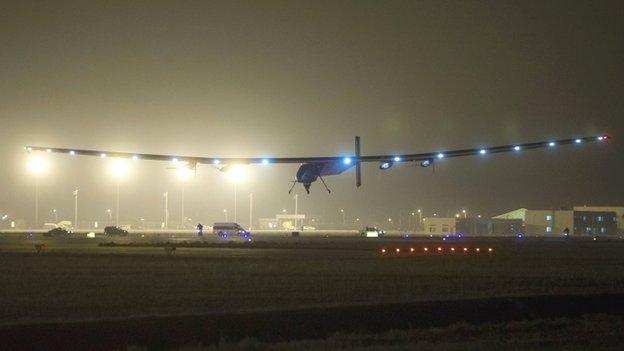
- Published25 May 2015